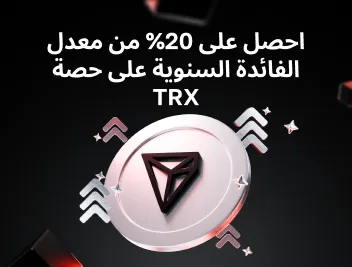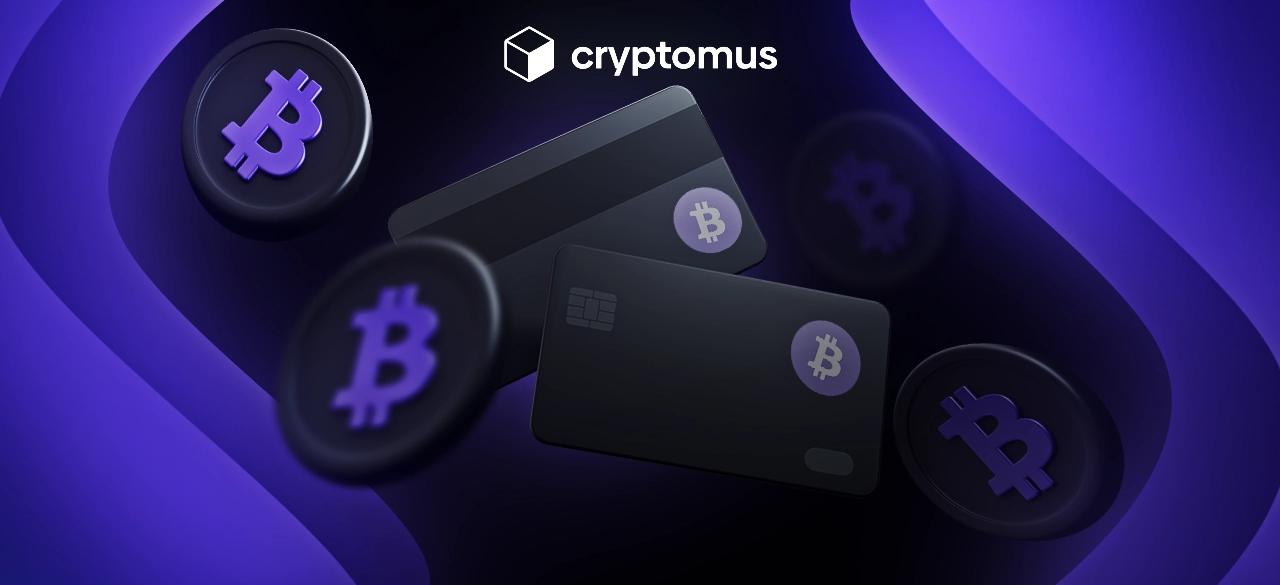
أنواع العملات المشفرة: أفضل البدائل لبيتكوين
ينمو سوق العملات المشفرة كل عام ويوفر المزيد من الحلول للأعمال التجارية، والاستخدام اليومي، والاستثمار. لا يزال الضوء الأول والأهم مسلطًا على بيتكوين، ولكن هناك العديد من المشاريع الأخرى ذات الوظائف والفوائد المثيرة للاهتمام. في هذه المقالة، سنقوم بتفصيل التصنيفات الرئيسية وأفضل البدائل لبيتكوين لعام 2025.
ما هي أنواع العملات المشفرة؟
العملات المشفرة هي شكل رقمي من المال يستخدم كوسيلة للدفع ويوفر مجموعة من الفرص في نظام البلوك تشين. يتم تصنيفها إلى عدة أنواع استنادًا إلى خصائصها الفريدة. إذا كنت مبتدئًا في التعرف على الأصول الرقمية، فمن المهم للغاية فهم اختلافاتها وتصنيفاتها. في البداية، لا توجد فقط العملات الرقمية الكلاسيكية ولكن أيضًا التوكنات. لتوضيح الأمر، تعمل العملات على البلوك تشين الخاص بها (مثل بيتكوين، إيثيريوم، وسولانا)، بينما يتم بناء التوكنات على البلوك تشين الموجود وتؤدي بعض الوظائف في النظام البيئي (مثل STX، LINK، RAY).
حاليًا، هناك حوالي 10,000 عملة مشفرة مختلفة، كل واحدة لها مهمتها الخاصة. يمكن تمييز الأنواع الأكثر أهمية من العملات المشفرة، وهي: العملات البديلة، العملات المستقرة، التوكنات المساعدة و التوكنات الحاكمة، والعملات الميمية. هذه هي الأنواع التي سنتحدث عنها بعد قليل. بالإضافة إلى ذلك، ستجد جدولًا يوضح أفضل اختيارات العملات المشفرة مع عناصرها الرئيسية وإمكانات تحقيق الأرباح.
العملات البديلة
لنبدأ بأكبر فئة من العملات البديلة، وهي جميع العملات المشفرة باستثناء بيتكوين. تقدم هذه العملات وظائف محسنة، مثل سرعات المعاملات الأسرع، والرسوم الأقل، أو التصاميم التكنولوجية المبتكرة. أمثلة على هذه العملات تشمل إيثيريوم، لايتكوين، ريبل، وكاردانو. إنها لا تنافس بيتكوين فقط، بل توسع نطاق الشبكة في مجموعة واسعة من الصناعات، من المالية إلى الألعاب.
العملات المستقرة
العملات المستقرة هي عملات رقمية مربوطة بأصول مستقرة مثل العملات الورقية (الدولار، اليورو) أو الذهب؛ ومن الأمثلة البارزة عليها USDT، USDC، وDAI. لا تتقلب قيمتها بشكل كبير، مما يساعد على تقليل التقلبات وضمان أداة مالية مستقرة. بالإضافة إلى ذلك، بما أن نقل البيانات عبر شبكة البلوك تشين أرخص، فهي مثالية للمعاملات الدولية.
التوكنات المساعدة
التوكنات المساعدة هي أصول افتراضية توفر الوصول إلى بعض الوظائف داخل البلوك تشين وتفتح خدمات جديدة. يستخدمها الأشخاص لإجراء المدفوعات أو الحصول على خصومات. من أشهر هذه التوكنات: Chainlink، Uniswap، وFilecoin.
وفقًا لـ CoinMarketCap، يستخدم عشاق العملات المشفرة Chainlink لتحفيز دقة البيانات، وضمان استقرار العقود، ومكافأة العقد الذكي على عمله في المعاملات. في حين أن Filecoin يسمح بالوصول إلى تخزينه السحابي، بينما يسهل Uniswap تبادل المعلومات بشكل لامركزي دون الحاجة إلى وسطاء. بالإضافة إلى ذلك، حتى توكنات الألعاب تنتمي إلى فئة التوكنات المساعدة، حيث يمكن للمستخدمين شراء الشخصيات والملابس وفتح ميزات جديدة في الميتافيرس.
التوكنات الحاكمة
التوكنات الحاكمة هي أصول مشفرة تعطي حامليها الحق في المشاركة في اتخاذ القرارات المتعلقة بتطوير التصميمات. يتضمن ذلك التصويت على تغييرات البروتوكولات أو تخصيص الأموال. إنها ضرورية للاقتصاديات التي تعمل وفقًا لمبادئ الحوكمة اللامركزية (DAO). من بين اللاعبين البارزين: Maker، Aave، Compound، وPancakeSwap. هذه التوكنات تجعل النظم البيئية أكثر ديمقراطية.
العملات الميمية
العملات الميمية هي عملات رقمية تم إنشاؤها كنوع من المزاح، مستوحاة من الميمات على الإنترنت. على الرغم من طابعها الفكاهي في البداية، اكتسبت بعض منها شهرة كبيرة وسوقًا قيمتها السوقية مع مرور الوقت. من بين هذه العملات: Dogecoin، Shiba Inu، Floki Inu، وPepe. تفتقر هذه العملات إلى الأسس التكنولوجية الجادة، ولكنها غالبًا ما تكسب الزخم بفضل المجتمعات النشطة والتسويق الفيروسي؛ لذا فهي مثالية للتداول وفتح المراكز القصيرة.
بذلك نكون قد استعرضنا الفئات الأساسية للعملات المشفرة. الآن بعد أن أصبحت قادرًا على التمييز بين الأنواع المختلفة، حان الوقت لاستكشاف حالات محددة. هذه الخيارات تشكل تشبيهًا رائعًا لبيتكوين وتظهر التنوع في مساحة DeFi.
أفضل بدائل لبيتكوين
هذه العملات المشفرة قد تكون البديل القادم لبيتكوين: إيثيريوم، ترون، سولانا، لايتكوين، ريبل، مونيرو، دوجكوين، بوليغون، وTON. ألقِ نظرة على الجدول أدناه الذي يسلط الضوء على أبرز ممثلي العملات المشفرة، رأسمالها السوقي، وتغيرات الأسعار في العام الماضي:
| الاسم | رأس المال السوقي (بالمليار) | متوسط السعر، فبراير 2024 | متوسط السعر، فبراير 2025 | التغير | |
|---|---|---|---|---|---|
| إيثيريوم | رأس المال السوقي (بالمليار)327 | متوسط السعر، فبراير 20242,419 USD | متوسط السعر، فبراير 20252,716 USD | التغير+12.3% | |
| ترون | رأس المال السوقي (بالمليار)19.61 | متوسط السعر، فبراير 20240.12 USD | متوسط السعر، فبراير 20250.23 USD | التغير+91.7% | |
| سولانا | رأس المال السوقي (بالمليار)93.96 | متوسط السعر، فبراير 2024102.79 USD | متوسط السعر، فبراير 2025193 USD | التغير+87.8% | |
| لايتكوين | رأس المال السوقي (بالمليار)7.93 | متوسط السعر، فبراير 202470 USD | متوسط السعر، فبراير 2025105 USD | التغير+50% | |
| ريبل | رأس المال السوقي (بالمليار)132.14 | متوسط السعر، فبراير 20240.5 USD | متوسط السعر، فبراير 20252.3 USD | التغير+360% | |
| مونيرو | رأس المال السوقي (بالمليار)4.06 | متوسط السعر، فبراير 2024128 USD | متوسط السعر، فبراير 2025220 USD | التغير+71.9% | |
| دوجكوين | رأس المال السوقي (بالمليار)36.77 | متوسط السعر، فبراير 20240.07 USD | متوسط السعر، فبراير 20250.25 USD | التغير+257.1% | |
| بوليغون | رأس المال السوقي (بالمليار)0.57847 | متوسط السعر، فبراير 20240.83 USD | متوسط السعر، فبراير 20250.30 USD | التغير-63.9% | |
| TON | رأس المال السوقي (بالمليار)9.32 | متوسط السعر، فبراير 20242.06 USD | متوسط السعر، فبراير 20253.7 USD | التغير+79.6% |
لنلقِ نظرة عن كثب على كل واحدة منها بمزيد من التفصيل.
إيثيريوم
إيثيريوم (ETH) هي ثاني أكبر عملة مشفرة من حيث القيمة السوقية وأداة رائدة للعقود الذكية والتطبيقات اللامركزية (DApps). إنها تشكل الأساس لمعظم تصاميم DeFi وNFTs، وبفضل عملياتها على آلية Proof-of-Stake (PoS)، أصبحت الشبكة أكثر كفاءة في استخدام الطاقة وقابلة للتوسع. لذلك، يُعتبر إيثيريوم بشكل مستحق العملة البديلة المسيطرة بفضل ارتفاعه القوي، ودليل ذلك هو نموه بنسبة 12.3% على مدار العام.
ترون
ترون (TRX) هو منصة تركز على DApps والمحتوى الإعلامي والترفيهي. يوفر عمليات سريعة وذات تكلفة منخفضة، مما جعله شائعًا بشكل خاص بين محبي العملات المشفرة الذين يقومون بالتحويلات بشكل متكرر. كما أن TRX يعد خيارًا جيدًا للتخزين المؤقت: حيث أن الزيادة بنسبة 91.7% تبرز أهمية العملة وتبشر بنمو أكبر في المستقبل القريب.
سولانا
سولانا (SOL) هو بلوك تشين عالي الأداء مصمم لتوسيع التطبيقات المالية والنظم البيئية اللامركزية. يقترح رسومًا منخفضة وسرعة محسنة للمعاملات (تصل إلى 65,000 في الثانية)، لذا فإن هذه الأرقام تجعل سولانا مثالية ليس فقط لـ dApps وNFTs، ولكن أيضًا للمدفوعات اليومية والتداول عالي التردد. علاوة على ذلك، فإن العدد المتزايد من مشاريع سولانا الجديدة، مثل Orbitt وMagic Eden، يخلق طلبًا كبيرًا من الجمهور.
لايتكوين
لايتكوين (LTC) هي واحدة من أولى العملات المشفرة، تم إنشاؤها كـ "نسخة أخف من بيتكوين" أو "فضة رقمية". توفر أوقات تأكيد كتل أسرع (2.5 دقيقة مقارنة بـ 10 دقائق في حالة بيتكوين) ورسومًا منخفضة، وغالبًا ما تكون مجرد جزء من السنت. مما يجعل لايتكوين مريحة للاستخدام اليومي، وبالتالي فهي تُعد وسيلة دفع فعالة. هذه المقاومة، مع فائدتها العملية، تجعل لايتكوين في طلب مستمر بين المستخدمين والمستثمرين على حد سواء.

ريبل
ريبل (XRP) هو تصميم للتحويلات السريعة والفعّالة من حيث التكلفة على المستوى الدولي. بفضل قدرة المعاملات العالية والرسوم المنخفضة وإمكانية تسوية المدفوعات في ثوانٍ قليلة، يتم تبني XRP على نطاق واسع من قبل البنوك والمؤسسات المالية. إنها وسيلة رائعة لضمان السيولة وتسريع العمليات.
علاوة على ذلك، مستقبل ريبل يبدو واعدًا بشكل متزايد. لقد أثرت تسوية النزاعات القانونية الناجحة مع لجنة الأوراق المالية والبورصات الأمريكية واعتماد XRP في التسويات الدولية على الزيادة الحادة في سعره بنسبة 360%. مع ازدياد اعتماده في التسويات الدولية، من المتوقع أن يستمر XRP في مساره التصاعدي.
مونيرو
مونيرو (XMR) هو خيار يركز على الخصوصية التامة وعدم الكشف عن الهوية. على عكس العملات الأخرى، يستخدم مونيرو التوقيعات الدائرية والعناوين الخفية، مما يجعل العمليات غير مرئية تمامًا للأطراف الثالثة. وبهذا الشكل، يجعل مستوى الخصوصية العالي من مونيرو عملة مرغوبة من قبل الأشخاص الذين يقدرون الأمان والسرية.
دوجكوين
دوجكوين (DOGE) هو عملة ميمية، ورغم قيمتها المنخفضة، إلا أنها شهدت نموًا سريعًا في السنوات الأخيرة. تم إنشاؤها كنهج فكاهي لبيتكوين مع كلب كشعار لها، وقد حصلت على الكثير من الاهتمام بفضل مجتمعها النشط ودعم الشخصيات البارزة مثل إيلون ماسك.
على الرغم من طابعها الفكاهي في البداية، زادت قيمة دوجكوين بشكل مستمر، مدفوعة بشكل أساسي بالضجيج والزخم المدفوع من قبل المجتمع. يمكن أن تكون قيمتها متقلبة للغاية، وغالبًا ما تتأثر بالمناقشات والاتجاهات في وسائل التواصل الاجتماعي. ينجذب المعدنون إلى دوجكوين بسبب وقت إنشاء الكتل القصير نسبيًا، بالإضافة إلى هيكل المكافآت الجذاب للمعدنين. في الممارسة العملية، يُستخدم دوجكوين غالبًا في إكراميات ومعاملات صغيرة بفضل رسومه المنخفضة (0.001 دولار) وأوقات المعاملات السريعة (من 1 إلى 6 دقائق).
بوليغون
بوليغون (POL) هو حل قابل للتوسع لإيثيريوم يساعد في تقليل الرسوم وزيادة السرعة باستخدام السلاسل الجانبية. يختار المتداولون عادة بوليغون لدفع الرسوم، والتخزين المؤقت، وحوكمة الشبكة. على الرغم من انخفاض قيمته بنسبة 63.9% في العام الماضي، إلا أنه لا يزال شائعًا بفضل شراكاته مع الشركات الكبرى وتطوير حلول layer-2 النشطة مثل zkEVM.
تون
الشبكة المفتوحة (TON) هو بلوك تشين تم إنشاؤه بواسطة تيليغرام ويوفر تحويلات سريعة وبتكلفة منخفضة باستخدام عملته الأصلية المعروفة باسم Toncoin. تسمح الشبكة ذات عرض النطاق الترددي العالي بمعالجة المدفوعات والتحويلات بسرعة، مما يجعلها مثالية للتحويلات اليومية. العملة مثيرة للاهتمام بشكل خاص لأنها تقدم تطوير تطبيقات Web3 في نظام المراسلة. إنها تتطور بسرعة وتجذب انتباه المستثمرين بنشاط.
كما ترى، يقدم سوق العملات المشفرة مجموعة متنوعة من البدائل لبيتكوين، حيث كل واحدة تتمتع بميزات فريدة وفوائد. يعتمد اختيار الخيار الصحيح على أهدافك: الاستثمار، أو الاستخدام في DeFi، أو المشاركة في حوكمة المشروع. ابقَ على اطلاع دائم في مجال العملات المشفرة، وابحث في المشاريع، واتخذ قرارات مستنيرة!
قيم المقال








تعليقات
0
يجب أن تكون مسجلا للدخول لتكتب تعليق